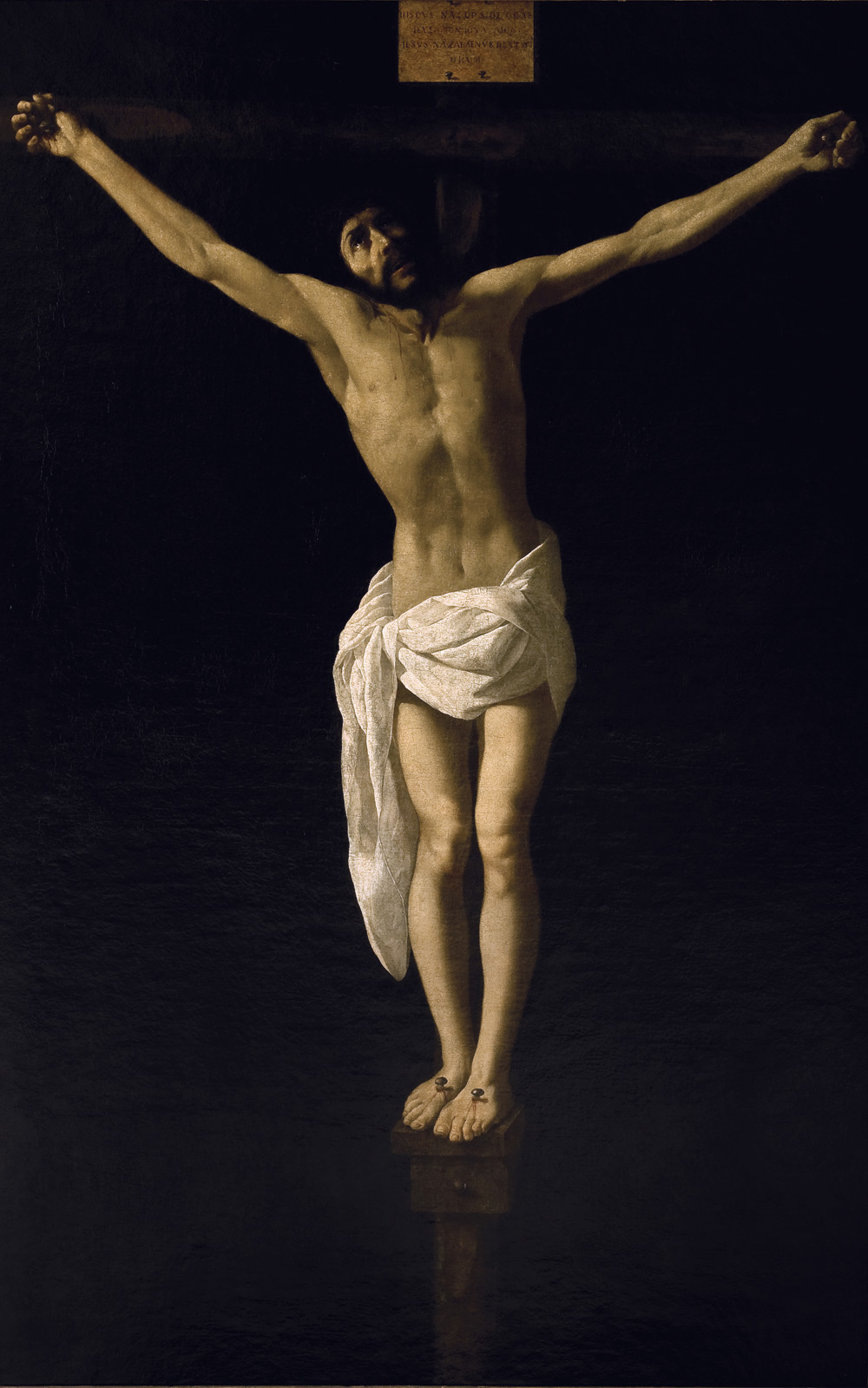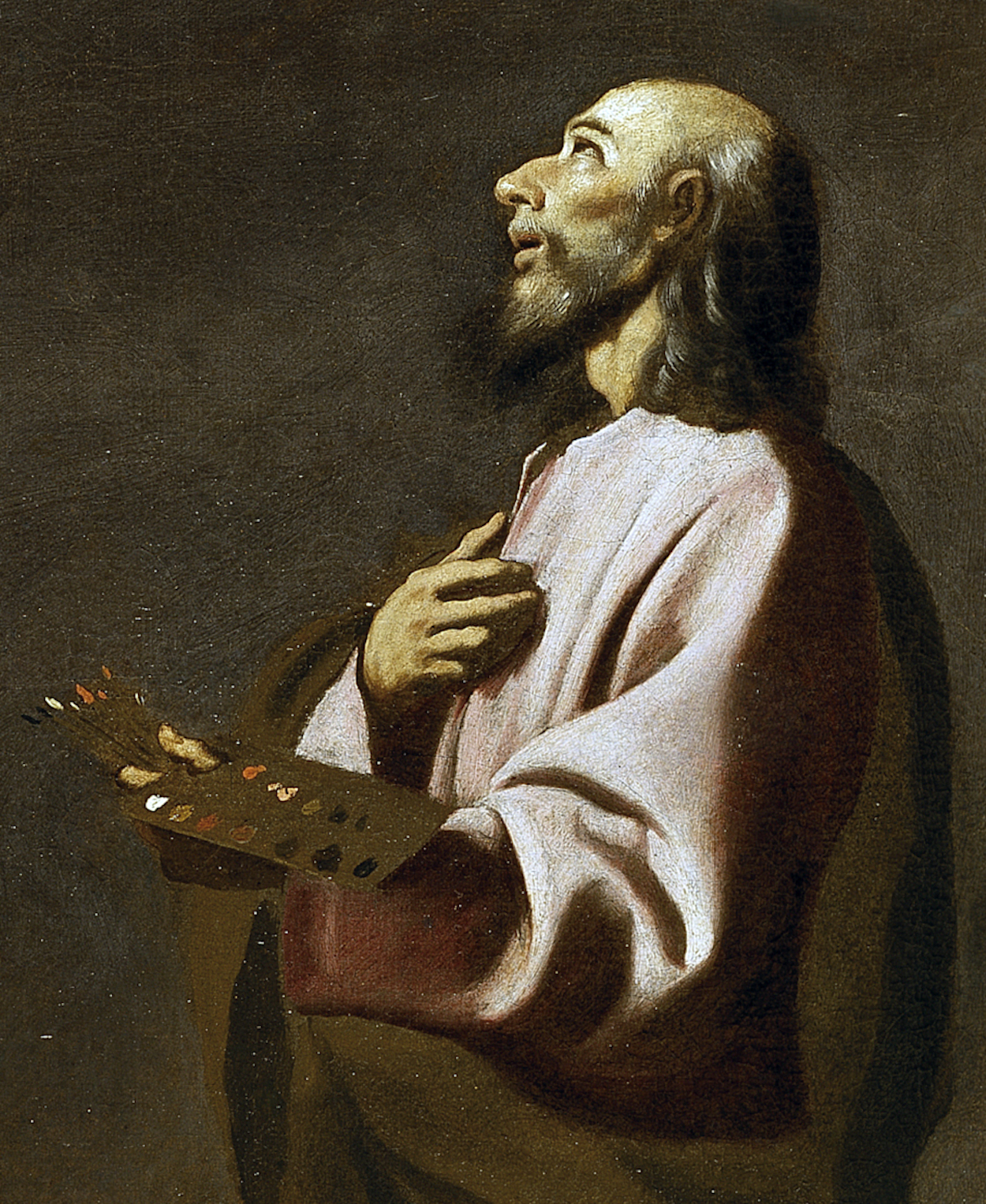Beginning in the mid-16th century, the Roman Catholic Church clarified and reaffirmed its doctrine and practices in an effort to combat the impact of the Protestant Reformation. This effort, known as the Counter-Reformation, recognized the educational and inspirational value of visual images and required artists to work in a style that favored clarity and dramatic fervor.
In 1627, Francisco de Zurbarán lived and worked in the provincial Spanish town of Llerena. He envisioned the crucified Christ suspended outside of time and place. Conforming to Counter-Reformation dictates, the artist depicted the event occurring not in a crowd but in isolation. Emerging from a dark background, the austere figure has been both idealized in its quiet, graceful beauty and elegant rendering and humanized by the individualized face and insistent realism. Strong light picks out anatomical detail, the delicate folds of the white loincloth, and a curled scrap of paper at the base of the cross on which the artist’s name and the date of the painting are inscribed.
Today is Good Friday in the Christian world, which commemorates the crucifixion of Jesus and his death on the cross.
P.S. Crucifixion is one of the strongest Christian symbols and was depicted in art countless times. Here's more art connected to this theme, check it out.


 Francisco de Zurbarán
Francisco de Zurbarán